Don't wanna be here? Send us removal request.
Text
Reading Process 5: The Sudden Midnight Realization
So, I’m coming back to El Pachuco for a moment. So like a good reader, I decided to read the introduction before reading the text to get a proper context for Valdez’s thinking and style. One thing that stuck out to me was that almost all of Valdez’s works include some commentary on Maya and Aztec mythology, particularly the Maya religious principle on In Lak’ech, or, “you are my other self”, it’s affiliated with identity and even unity.
Now, before I get back to my dude, El Pachuco, I have to talk about Tezcatlipoca. An Aztec deitiy, Tezcatlipoca is the god of time, more particularly the embodiment of change through confict. He’s a very tricky fellow (and when I say tricky, I mean that according to Aztec mythology he kind of destroyed the world four different times because of his rivalry with Quetzalcoatl, here’s a fun video about it!)

Tezcatlipoca is often associated with the color black... wanna know who else is often associated with black, discord, and when stripped by the marines during the riots scene was reveled to wear a warrior style loincloth?

That’s right, El Pachuco! I admit, I didn’t really catch onto this in depth until I started reading my criticisms, but I tried to look for mentions and motifs of Mesoamerican philosophy during my initial reads. When I first read the riot scene, I drew a lot of connections between the Zoot Suit Riots and Spanish Conquest of the Aztec Empire, this is most obvious when El Pachuco himself is stripped down to a loincloth. During the scene, it’s also revealed that Henry’s brother, Rudy, is also stripped down and attacked. Rudy stays within his time, but El Pachuco transcends it and goes back to the roots. By showing these two attacks, Luis Valdez connects the two events, multiple identities are one subject, In Lak’ech is achieved.
2 notes
·
View notes
Text
Reading Process 4: The Ramblings of a Theatre Dork

Can we all just agree that El Pachuco is a style icon? As a theatre nerd, when I was reading this I was constantly wondering how cool it would be to stage this. Also I think the set design would be pretty dandy too! When I looked at the set notes I was really impressed by the simple set, it’s mostly made up of levels of varying heights (that bit made me geek out a bit because we use that technique a lot at the ATC) but they’re also rounded which gave me a heart attack. It’s a unit set, but it’s also so versatile at the same time because the power of the writing and the actor’s performances are meant to suck in the audience and create the scenery by themselves rather than relying on the set. One thing about this set that I thought was really interesting was the use of a drop that covers the set before the show starts. It’s made to represent a newspaper and it reads: LOS ANGELES HERALD EXPRESS Thursday, June 3, 1943. Alongside a headline: ZOOT-SUITER HOARDES INVADE LOS ANGELES. US NAVY AND MARINES ARE CALLED IN.

Honestly this set is really cool and I am actually geeking out right now! In order to address the audience, there’s a giant slit for the actor who plays El Pachuco to walk through, WHO USES A CARTOONISHLY GIANT SWITCH BLADE TO “CUT” THROUGH THE DROP AND I REALLY LOVE THAT BECAUSE IMAGINE GETTING TO BE THE PERSON WHO GETS TO MAKE THAT PROP, HONESTLY THAT WOULD BE SO FUN!

Needless to say, I actually really love this show (and the set... and the props... also I think the lighting and sound design would be really cool too...) and wish I had the ability and means to bring it to life.
4 notes
·
View notes
Text
Reading Process 3: White Savior?
The White Savior Complex refers to a trope that a lot of media (ESPECIALLY Hollywood Oscar-Bait films) use, essentially this is when a “well-meaning” white person goes out to help POC, in theory this trope seams harmless; after all, using your privilege to help others is noble, but this trope is often insidious in that the “well-meaning” white white person often gives out condescending compassion to the POC they seek out to help. This trope is a modern day critique of themes expressed in Rudyard Kipling's 1899 poem, The White Man’s Burden.
Many of the characters in Zoot Suit are inspired by people in real life: Henry Reyna is primarily based on Henry Leyvas (the real life leader of the 38th street gang, a real life pachuco who defended hid innocence in the Sleepy Lagoon Murder Trial),

Della Barios (Henry’s girlfriend) is based on Dora Baca (Leyvas’ real-life girlfriend), and the main reason I wrote this post is Alice Bloomfied, an activist who tries to do all she can to help out the accused pachucos (she is based on real-life activist, Alice McGrath, who is of Russian-Jewish descent)

The Real-Life Alice was instrumental in activism, especially regarding the Zoot Suit Riots, she alerted the public’s attention to the treatment of the youths during the trial that are also included in the play, most notably, They weren’t allowed to change their clothes which caused a negative influence that impacted the guilty ruling from the (all white) jury. From 1942-1944, McGrath served as the executive secretary of the Sleepy Lagoon Defense Committee, throughout the rest of her life she was active in progressive issues. Luis Valdez states “She was one of the heroines of the 20th century. In Los Angeles, I can’t think of many people who surpass her influence”, a sentiment in which I very much agree. Take note, this is a good example of using your privilege to help others who do not have said privilege.
Luis Valdez does something really smart and clever when writing Alice Bloomfield’s character, he subverts all of the tropes and moves associated with the WSC. This is really notable in this interaction between Alice and Henry in act 2 scene 3:
ALICE: But what about the trial, the sentence. They gave you life imprisonment?
HENRY: It’s my life!
A: Henry, honestly--are you kidding me?
H: You think so?
A: But you’ve seen me coming and going. Writing to you, speaking for you, traveling up and down the state. You must have known I was doing it for you. Nothing has come before my involvement, my attachment, my passion for this case. My boys have been everything to me.
H: My boys? My boys! What the hell are we--your personal property? Well, let me set you straight, lady, I ain’t your boy
In most stories surrounding the WSC, the person/people the WS is attempting to help out have no power or autonomy, they are often props to subdue white guilt and create inspirational stories. However, in this work, Henry calls out Alice (which is obviously something that never happens in WSC stories), his personal growth is not initiated by Alice’s activism, it’s in his own mind with his interactions with El Pachuco. This isn’t a White Guilt play, it’s a play about processing a traumatic injustice through the eyes of someone who went through it. In lesser hands, Alice Bloomfield could have easily become another White Savior, but through understanding and critiquing of the trope, her presence in the play adds nuance and pathos to the story
4 notes
·
View notes
Text
I really like how you paid attention to how the events in question effects the life of Mary Praise, it leads into a really interesting conversation about internationalization in literature. The different subjects that you focus on (gender, race, social class) is really important to take note of when analyzing this work. I want you to keep noticing these issues and try to connect them to how this happens today and how the message is conveyed.
Pages 1-100 Chapters 1 through 4
Ok so I started to get into the groove of my book, and there are a lot of observations that I had. So what I read so far was that Sister Mary Joseph Praise, a nun from the Carmelite order of Madras, and her friend Sister Anjali, were going through a nursing program. Their Mother Superior wanted to send them to the “dark continent” of Africa to spread the message of Christianity’s love and peace. On the way to Africa, Sister Anjali falls ill and there is a spread of Typhoid on the ship. While on night vigil, she meets a young British Doctor named Dr. Thomas Stone who also gets typhoid, so Sister Mary Praise helps Dr. Stone recovers. She off course becomes swoon when the dashing British Doctor Stone commands control of the ship and tries to diagnose and treat the typhoid being spread. (Typical falling in love with the white man trope). But again I don’t blame her, but the charm gets shattered when they have to dump Sister Anjali out into the ocean. (Yikes) However, Sister Mary Joseph Praise wants to follow Dr. Stone to Ethiopia but is forced to go to Aden in Yemen, where she ends up at a sweatshop. (Now this is an analysis on women’s issues because according to the main character, her story ends here. She doesn’t explain her life story until she gets to the city of Harrar in Ethiopia. I don’t know if some sort of rape or abuse happened, but it said that there was some sort of blood between her legs. So the story goes that they were trying to assume what happened to her, but again I was like why don’t you just help her out sometime!!! Just welcome her into and help her instead of treating her like she sinned. Actually, investigate what happens and give her assistance instead of just sweeping it under the rug. Something bad must have happened as she was shown in Aden that the world is evil and that there is a fragile balance between good and evil. pg 30)
She gets a job at Mission Hospital in Addis Ababa and reunites with Dr. Stone. Dr. Stone, of course, is considered one of to best surgeons at the hospital and was so proud that on one occasion when he accidentally cut himself and exposed himself to germs, yes, he cut off his own fingers. Of course, he proved to be as dexterous and as agile as he was when he had his middle finger LOL. Anyways Dr. Stone and Sister Mary Praise, prove to be a kick-ass team at the hospital and he could read his mind. Now the thing is, SURPRISE, Sister Mary Praise becomes pregnant and it becomes a scandal. I understand it is unseemly for a nun to give birth since she took the vow of chastity, but HELP A WOMAN OUT!!! IF SHE IS PREGNANT YOU HELP HER AND YOU TREAT THE CHILDREN SHE GAVE BIRTH TO RIGHT. But it turns out that the twins are conjoined and the main character Marion has to accept the fact of reuniting with his conjoined, but separated, brother Shiva to find their runaway dad.
When (Dr. Stone) their father was dealing with Mary Praise Stone’s (their mother) pregnancy, Dr. Stone treated the Fetus as if it was an enemy that needs to be crushed out. Which makes sense if a woman is dying and like Mary Praise is not breathing but still it seems to be a little rough on the fetus since it was, in fact, Dr. stone’s child. And again he tries to open up a random book and learn how to crush a fetus’s child. Which is again Verghese is trying to highlight why there should be more humanitarianism in medicine instead of treated everything including your own child as if it was an enemy. He is trying to highlight having more empathy towards others and having the proper technique that ensures the welfare of everyone.
3 notes
·
View notes
Text
The Language of Zoot Suit
One thing I really noticed while reading this work was the use of language. Obviously, there is a use of Spanish, but there is more of a use of Spanglish. However, one challenging thing for me reading this personally is that it’s LA specific. There is the use of some universal Spanglish (Watcha mi tacuche, ese), but the use of certain LA specific slang (Carnal). Due to discussion we have had recently in Lit, especially that around There Are More Beautiful Things Than Beyoncé by Morgan Parker, I started to think about who the audience Luis Valdez had in mind. A lot of the frustration that was perceived was that a majority of the readers in the class didn’t necessarily understand the references in the poem and dismissed it as some, “Pop Feminist Chic”. I’ll admit, I felt some of that frustration when I was reading the work for the first time because I was facing a lot of slang you don’t necessarily hear in Metro-Detroit. However, due to thinking about the class discussion of Parker’s poem, I thought more in depth about Valdez’s play; more specifically how Valdez appeals to his intended audience by using slang (correctly) that they know as well. The audience can be Mexican-Americans as a whole, but more specifically the audience who would get these references best would be Mexican-Americans from LA.
4 notes
·
View notes
Text
I am really intrigued that you chose this book due to it’s parallels to your own aspirations of being a doctor. One thing I really find interesting in your analysis is the mental and emotional consequences in conducting surgeries and the wave of emotions one goes through when someone unfortunately dies in surgery. I’m really intrigued on the part with the main character’s fractured relationship with his family, I know you didn’t go into as much detail about it here as you did with the ethical dilemmas inherent in surgeries, but I kind of want to know more; how could these relationships possibly add more to the emotional strain that Marion already has?
A Cutting for Stone/Prologue
So my first thought that I had when I began reading Abraham Verghese’s “Cutting for Stone” was how much it relates to me being a doctor. One of the major discussions in the text was the morality behind the field and the correct understanding one must have for doing surgery. It first discusses asking for help when one needs it and knowing when not to operate and avoiding being a complete airhead. Surgery is very fatal and so the perception and wisdom needed are very refined. One of the wisdom that speaks to me personally is when the main character, Marion Praise Stone, talks about how subconsciously people become doctors because they feel that mending others will help mend their own souls. This speaks to my desire for becoming a psychologist/ doctors, It is not to boss others around and not thinking you’re doing them a favor and you deserve praise and credit. It is to use your experiences and your painful past to empathize with your patients and to by yourself cultivate the lessons that you learned and convey them respectfully and in a caring way. But what always gets to me is when Marion says that “Sometimes helping others can open a void in you.” This honestly makes me shiver cause exploring one’s own darkness and seeing people die during surgery is very difficult. Thus one must be careful and strong enough to realize that everything has their time. Having a strong brain and strong spirituality, to me, is important when handling with very dark things. When one deals with dark things, don’t do it unnecessarily, realize that even if mistakes are made and everything seems lost, lives can’t be saved, or you feel like you failed, staying strong and learning lessons, learning more about yourself, and reconnecting with your past, lifting others up, spreading love and care, having positive intentions, breathing in and out, having positive mental mind, and realizing that we are all tested in very dark and difficult ways, loving yourself and caring for others, having empathy, and creating light out of darkness will help in assisting even very difficult tasks such as psychology and being a surgeon, or any trial that occurs.
In this case, though, he has to find a way of connecting with his brother Shiva and facing his past of losing his mother who was a nun from India, Sister, Mary Praise Stone, and reconciling with his runaway father, English Surgeon Joseph Praise
3 notes
·
View notes
Text
Reading Process 1: El Pachuco
For this project, I am reading Zoot Suit by Luis Valdez. One thing that is pretty unique about this work is that it isn’t a novel, it’s a play. At first this was kind of hard to really get into, I didn’t really get into my momentum until I found a bootleg of the play on YouTube and read along with the actors. Eventually I started to imagine the scenes as if they were on a stage and I started to block the scenes and I started to read without the help of bootleg.
I was really excited to start this work because the plot was really interesting to me and the history surrounding the events of this play is something I’m very passionate about, especially in activist circles. One thing I find is the most interesting part of the play is the character of El Pachuco, who is a personification of the zoot suit, and by extension, the perceived lifestyle of a pachuco. El Pachuco serves as a narrator and even directs the cast. He doesn’t interact with any of the other characters, except for the main character Henry.
I think this is also indicative of the role of El Pachuco, part of me thinks he also serves as another side to Henry’s persona. In the play, Henry was going to enlist in the navy, until he’s arrested because he’s a suspect in a murder. Throughout the play, he’s in jail and his only company is El Pachuco. I see this as a way of Henry battling with the persona that is accepted by society (someone who is willingly enlisting for the navy, i.e. someone who wants to serve their country) vs the persona of his youth that was created because of disenfranchisement and counter cultural ideals (i.e. the zoot suit and the pachuco aesthetic). El Pachuco serves as a way for Henry to examine his situation and how his hope fluctuates throughout the subsequent trial.
7 notes
·
View notes
Text
The Sleepy Lagoon Murder and The Zoot Suit Riots
On the morning of August 2, 1942, José Gallardo Díaz was discovered unconcious and dying near a swimming hole, known as the Sleepy Lagoon. Due to the setting of the crime, newspapers used this to create the moniker of, “the Sleepy Lagoon Murder”. Díaz was taken to Los Angeles County General Hospital where he died shortly afterwards. Now you’re probably asking, “Goodness! How could this have possibly happened?!”. His autopsy revealed that he had a fracture at the base of his skull, however the cause of his death still remains unknown to this day. The LAPD soon arrested 17 Mexican-American youths as suspects, and even with insufficient evidence, they were all held in prison without bail for murder (remember, this IS 1942, that happened A LOT). The trial ended on January 13, 1943, nine of the defendants were convicted of second-degree murder and were sentenced to San Quentin Prison, the rest were charged with lesser offences. The convictions were reversed on appeal in 1944, but it was too late, The Sleepy Lagoon Murder was already a precursor to the 1943 Zoot Suit Riots.
But wait?! What was the Sleepy Lagoon? What lead up to the events of the death?!
Sleepy Lagoon was a reservoir near the Los Angeles river, which was often frequented by Mexican-Americans. Side note, racial tensions weren’t that great in 1940′s LA, due to the Bracero Program, there was a rapid influx of laborers from Mexico and the population of Mexicans in LA rose at this time. The LA city council actually called this a “Mexican crime wave” oh, wow this pendejada is still going on! This murder was basically an excuse for the LAPD to racially profile Mexican-Americans (especially if they were wearing zoot suits). The police and press characterized all Mexican-American youths as, “pachuco hoodlums and baby gangsters”.
Remember, the zoot suit was very baggy and used a lot of fabric, contrast to the tight suits that were encouraged to ration fabric. The act of wearing the zoot suit at this time was seen as “Un-American”. June 3, 1943, 11 sailors got off a bus and started toward Downtown LA. Upon encountering Mexican youth in zoot suits, they got into a verbal argument. Later, the sailors told the LAPD that they were jumped and beaten by the gang. Officers went to the scene, “seeking to clean up Main Street from what they viewed as the loathsome influence of pachuco gangs”. Then an actual convoy of 200 sailors headed to East LA (basically the Mexican part of LA) and started to beat zoot suiters with clubs, stripped them, and burned the tattered clothes in a pile (And guess who got arrested? Hint: they weren’t the sailors). Media coverage of the incidents spread, and soon chaos and mayhem spread until the 8th.
Due to these events, many civil rights activists (Ralph Ellison, Richard Wright, Cesar Chavez, Malcolm X, and most importantly to me seeing as I’m reading his play, Luis Valdez) were inspired by the events in their works and activism.
8 notes
·
View notes
Text
Zoot Suit
Luis Valdez is one of the most important figures in Chicano theatre and the greater Chicano movement as a whole. Growing up I already knew somewhat about Valdez and his work, particularly La Bamba (1987), the tragic biopic of Chicano rock and roll singer, Ritchie Valens who died at 17 in a plane crash alongside Buddy Holly and Big Bopper. Also looking at his Imdb page I found out he played Tío Berto in Coco and I’m still kinda fangirling about it. Throughout the Chicano movement of the 1960′s-1970′s, Valdez used the power of theatre to engage the masses, particularly the Chicano community. A zoot suit is a men’s suit with high-waisted, wide-legged, tight cuffed, trousers accompanied with a long coat with wide lapels and wide-padded shoulders (this look was also completed with a long chain). This was the Pachuco look that was highly popular with the Chicano youth at the time, and it looked like this:
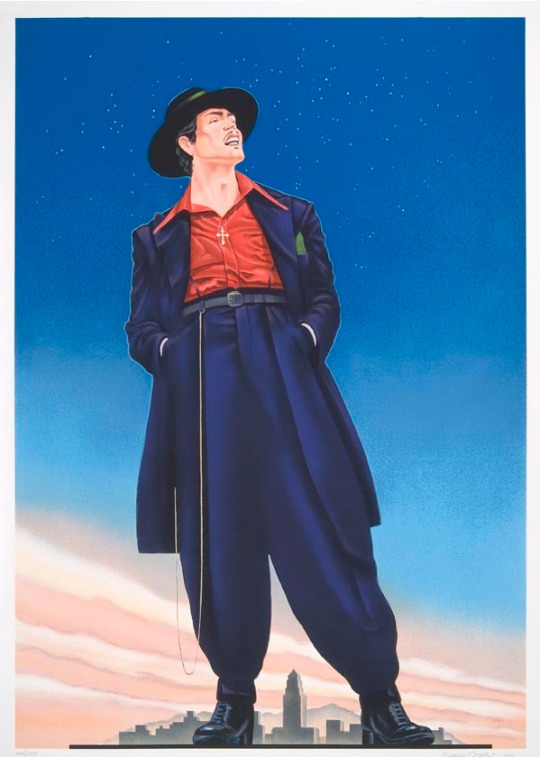
I’ll go into more depth about the Zoot Suit riots and the preceding Sleepy Lagoon murder in another post but to summarize; zoot suits were made out of a lot fabric, and during WW2 era America, it was heavily frowned upon to not partake in rationing. This created a lot of tension between the Chicano youth and white servicemen in LA. From June 3-8, 1943, american servicemen and white civilians attacked zoot suit wearing youth. This resulted in over 150 injuries and over 500 (Mostly chicano) arrests. The Zoot Suit Riots were a defining moment in Chicano history and has never really left the cultural conscious, even going so far to inspire this song. However, in 1979, Luis Valdez was also inspired by this event and wrote the play Zoot Suit (which was also the FIRST Chicano play on Broadway). Earlier in the school year, WAAAAYYY back into the poetry unit, I was recommended this work by my humble instructor. For a few months I’ve been researching this work and brushed up on my knowledge of the Zoot Suit Riots and Sleepy Lagoon Murder. I wanted to read Zoot Suit because this particular play was such an important factor in the Chicano movement and really propelled Chicano stories. It’s about a period of history and a group of people that I really feel like should be talked about more and it has a great balance of scholarship and interest for myself.
6 notes
·
View notes
Photo

Lasseter Out, Docter In – Pete Docter Named As Pixar’s New Chief Creative Officer
83 notes
·
View notes
Text
Heathers
After Watching the Movie:
“If everyone jumped off of a bridge, would you do it too?”
“Probably.”
That’s the basic plot of the 1989 dark comedy, Heathers. As we talked, we concluded that the movie is essentially making fun of fads to be “hip”, “trendy”, and “popular”, the fad in question is suicide. After the apparent suicide of Queen Bee, Heather Chandler, everyone in the school and even news outlets romanticized her death, (”Heather Chandler got depth”). The sudden fad of suicide was then taken to new extremes when a young woman at the school, viciously dubbed by the Heathers clique as, “Martha Dumptruck” actually attempts suicide. We think that this idea may have had a quirky charm to it in 1989 (albeit a sort of black humor charm), but in a post-Colombine world (as a major plot point in the story involves blowing up the school) we think that this kind of movie with this plot wouldn’t be made today considering the negative real life consequences of violence at schools.
Conversation with a parent:
Us: “If the movie was made post-Columbine, what would you think would have happened?”
P: “The only way that this could be made post-Columbine is as a documentary?”
Us: “So a big part of the movie is teenage vindictiveness and spite, even to the extreme, do you think it’s reflective of schools back then? or even now?”
P: Oh yes, especially back then. I think kids today are more accepting than back then because back then it was about the way you dressed and the people you hung out with.”
Us: “Do you think that dark humor is the best method of satire.”
P: “Dark comedy is a good way to get it across, I don’t know if it’s the best way to represent satire.”
Us: “What would then be the best way to get satire across?”
P: “Mel Brooks.”
Us: “In this movie, Winona Ryder was 18, which is a believable age for a teenage character, along with her other cast members who were all around their late teens or early twenties. Do you think it’s effective to connect with teen audiences to actually use teens in the movies, or do you think that it doesn’t matter?”
P: “Yes because Grease proved that you can’t have teen characters when the actors are in their late thirties. I believe that teen actors can make a character much more believable and connect to the audience much more effectively.”
2 notes
·
View notes
Text
Rebel Without a Cause
Conversation after watching:
- Getting Holden Caulfield vibes, particularly the red jacket (compared to a red cap) and the quote, “Nobody acts sincere”. We felt this similarity between the two characters of Jim Stark and Holden Caulfiled was noticeable and timely because Catcher in the Rye was published in 1951 while Rebel Without a Cause was released four years later in 1955.
-Concerning the title, Rebel Without a Cause, we initially thought it was referring to James Deans’ character, Jim. But after watching the movie, we changed our perspective and now believe that it is referring to Plato. We think this because throughout the movie, Plato has had a menagerie of issues. From shooting puppies (as mentioned in the beginning exposition) to attempting to recreate a family structure with Jim and Judy, we think he’s the “Rebel Without a Cause” because he’s an outcast with no clear explanation as to why he’s an outcast.
Conversation with a Parent:
Us: “Do you think that this movie could relate to you’re own High School experience?”
P: “Actually yes, because the whole plot of trying to move to a new are, trying to be accepted, and to fit in, that never changes. And a lot of people get into situations that they can’t handle”
Us: “Yeah but I think the whole drama aspect was exaggerated for the sake of the plot and most of the time the students weren’t even in school. what do you think about that?”
P: “They’re not going to show the movie in school. The director wants to focus on the times out of school when they can be free because in school they’re not going to do anything because the Vice-Principal is a hard-ass.”
Us: “Back then, you could relate to the students when you were young, but now since you’re a parent, how does your view of this film change to a parent’s perspective?”
P: “Her parents didn’t like him [Jim], they thought he was a bad influence, and they didn’t want him around her, that’s what parents do”
Us: “So do you think it’s still like that now?”
P: “Oh yeah! Most parents really want what’s best for their kids so they’re going to do or not do what they think is best at the time for their children.”
Us: “As a parent would you judge the kid by his background or by his character?”
P: “Not necessarily what I hear but what I see.”
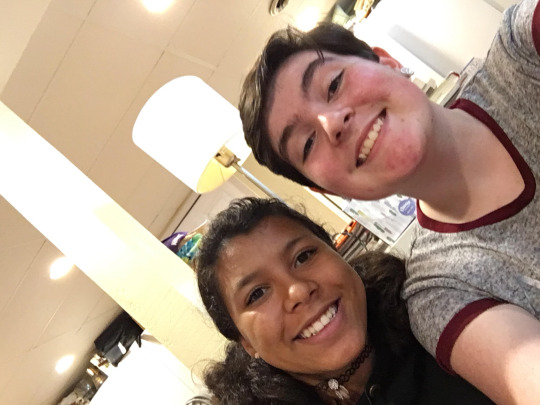

2 notes
·
View notes
Text
The First Superhero
“The Phantom” is an American adventure comic staring the character with an alias of the same name. This comic was first published by Lee Falk in February 1936. The Phantom is a costumed crime fighter who operates in the fictional African country of Bangalla. The general story is that the main character (Jimmy Wells- Wealthy Playboy) is the 21st in a line of crime-fighters starting in 1536 after the father of the original Phantom, Christopher Walker, was killed in a pirate attack. The Phantom would become a title passed from father to son to make it seem as if it was all one man who couldn’t die. Many staples of The Phantom would include a skintight costume, the black domino mask lacking pupils, and the classic trunks (Underwear on the outside). The character of The Phantom is heralded by many as the first superhero as the character predates staples in the comic industry as Batman and even the Man of Steel himself, Superman. This character may not be known as well as Superman or Batman, but many tropes that both of these characters and many other superheroes utilize can find roots with The Phantom. From operating in a secret cave hideout, using wits and strengths rather than superpowers, and a tragic backstory, it is undeniable that The Phantom is the Original Superhero.
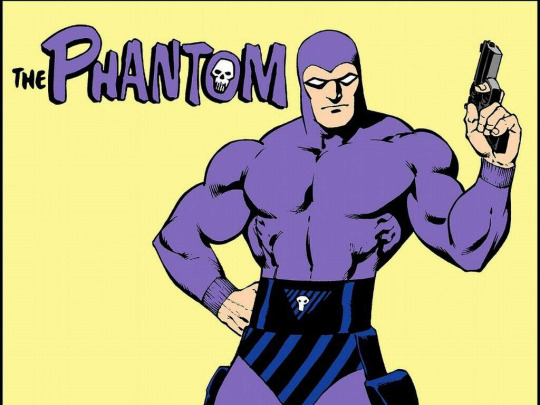
2 notes
·
View notes
Text
Hold The Microphone 3 Inches From Your Face
I’m very involved in our theatre program here at school. Since I was a freshman, I have been on the sound crew and have recently become a crew chief for the second time. Sound, in the aspect of microphones and speakers, is relatively new in the world of theatre; however, sound effects have been an integral part of theatre since the early days. Sound effects evoke emotion, the general mood, and can serve as an underscore for the play. In the Italian form of theatre, Commedia dell’arte (A form of performance that relies on improvisation and pantomimes), sound and music was used to enhance performances. Eventually, sound in theatre productions evolved from sound effects being produced from backstage to the use of MIDI and digital audio technology in the 1980′s and 1990′s. With these new innovations, all of the sound effects and music if there was no orchestra could all be on one thumb drive. The use of sound today still evokes emotions, and can still enhance performances, but now sound can be used to amplify the actor’s voices so more people could hear them and sound can revolutionize the designs of theatres today.
So, just to be clear, when you are holding a hand-held mic:
1) Hold with a firm grip, the mic can technically handle being dropped, but it’s preferable to not drop the object that’s letting you be heard
2) Hold it three inches from your face, the sound people will make sure you will be heard
3) The mic is not a miracle worker, it puts out what is put in (you know, cause it amplifies sound), so please speak with at a reasonable volume when you are speaking into the mic.
With love,
Your Friendly Neighborhood Aud-Tech
3 notes
·
View notes
Text
I’ve Been In Band For Nearly 7 Years, So There’s Probably An Appeal There
Since I was in the fourth grade, I have been playing the flute, a year before that I started piano lessons. Music has been a large part of my life; My Grandmother was the resident organist at her church, my dad played the clarinet when he was in school, and my sister and I are both in band. This art isn’t all about playing hot cross buns or playing some piece a dead guy in a powdered wig wrote 300 years ago. Band, and music in general, to me is much more than achieving first chair. It’s about learning and expanding your own skill, it’s all about expression. Whenever I have marching band practice, I try to push myself to be better than I was at the last rehearsal. Even though there’s so much sweat, tears, and sunscreen, I still come back because I’m part of something bigger. Whenever I can overcome a tricky scale or somehow manage to play an allegro Obbligato, I feel a rush of pride knowing that my hard work an practice had finally paid off.
2 notes
·
View notes
Text
Animation: Why I Love It
I think it’s pretty obvious that I am a literal six year-old stuck in a 16 year-old’s body, especially when it comes to cartoons. Whether it’s hand-drawn animation or computer generated, the industry standard is at least 30 frames per second. The time to make an 24-minute animated episode can take around one month to animate with animators constantly working on certain aspects: whether it is lighting, animating, or inking/rendering. To animate anything takes a tremendous amount of dedication and skill, you have to persevere and practice because the more frames you have per second, the smoother the animation can be. with hand drawn animation in particular, it can hold up to today’s standards whether it was created in the 1930′s, 1990′s, or even today.
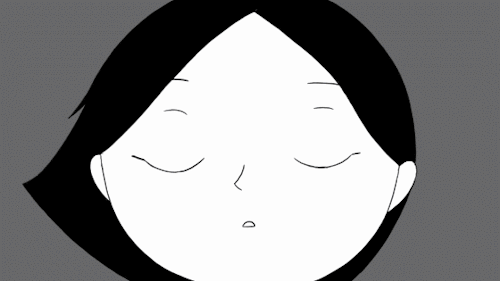
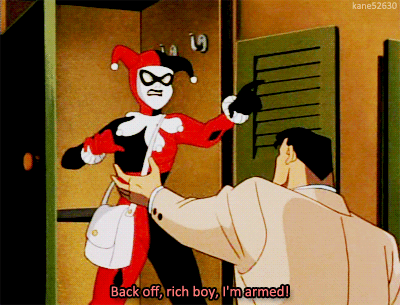
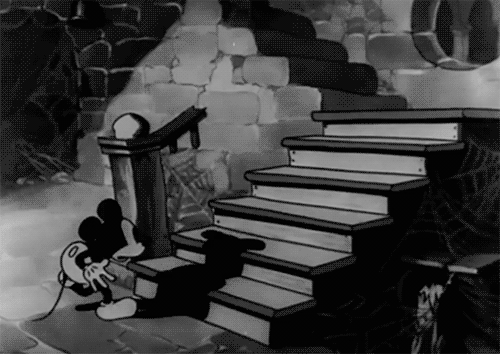
2 notes
·
View notes
Text
Imitation Is The Highest Form Of Flattery
I’m sure we’ve all heard of the saying “Imitation is the highest form of flattery”. Yet, there is still a debate about Fan Art: Is Fan Art really art or is it plagiarism? Let’s define Fan Art: Drawings, digital art, or other tributes made towards a show, band, person, or novel; this work is unofficial. I thought about my childhood and remember that I often drew myself and friends as Star Wars characters. I remember that Star Wars had me so invested into its world and story that I had wanted to insert myself into it by any means necessary. This made me think about why others made fan art. Perhaps, they wanted to draw out scenes from a novel in the way the artist had interpreted it, or maybe they wanted to show off their OTPs and preferred ships, or maybe they wanted to make a tribute to something they love and appreciate? When I see people post fan art, they don’t say that it’s their original creation but they say “fan art of _____” or “My fan art of _______” . When someone wants to make a tribute to something, they want to put their best foot forward. They put in work, time, and their skill into their tribute and then they share it to the world celebrating the original work. I don’t consider this plagiarism, but as a form of art that inspires others to create their own work.
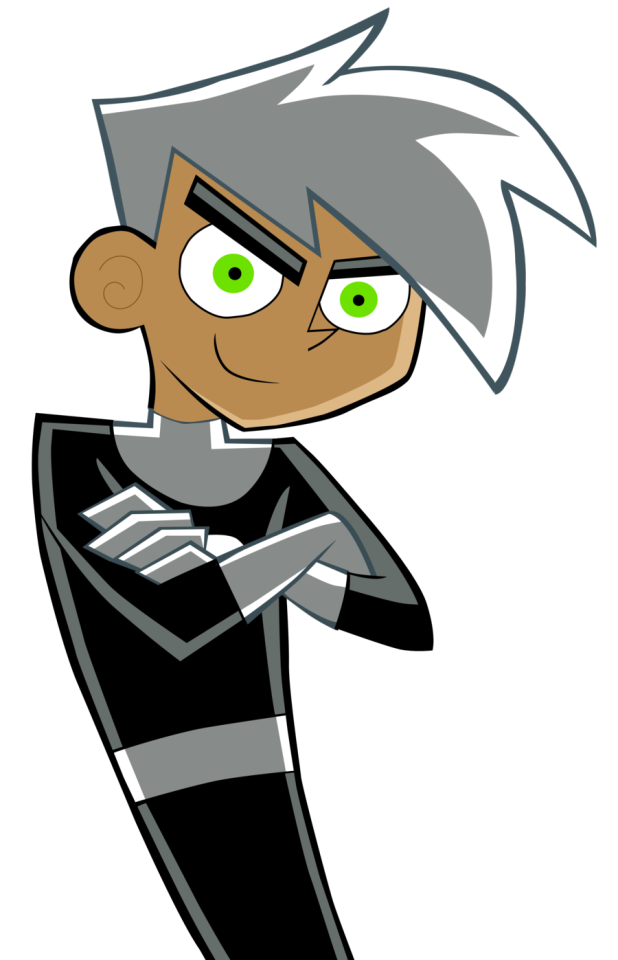
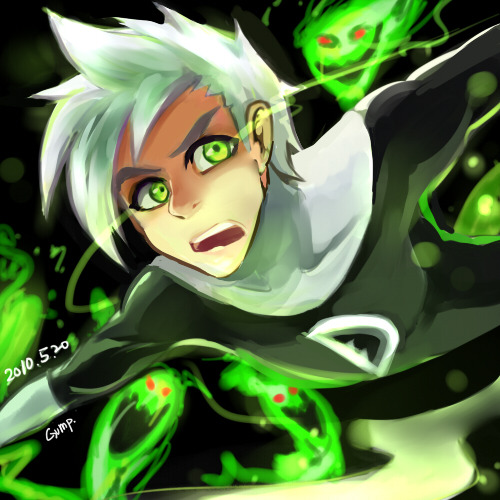
Fan Art by GAN-91003 on Deviantart
https://picolo-kun.deviantart.com/art/Danny-Phantom-209558032
0 notes